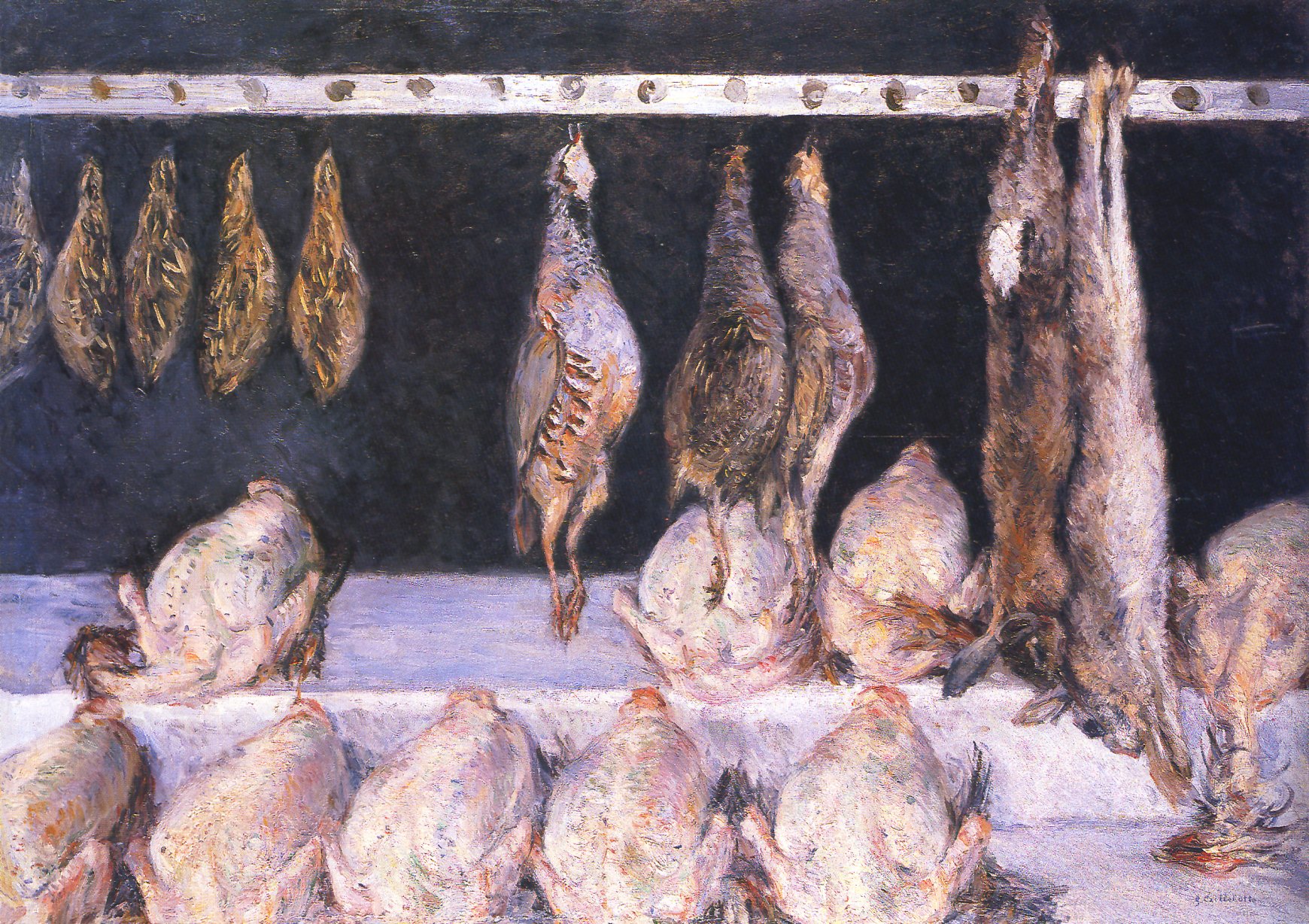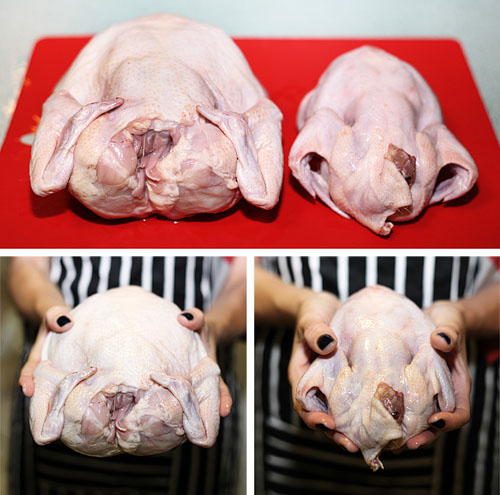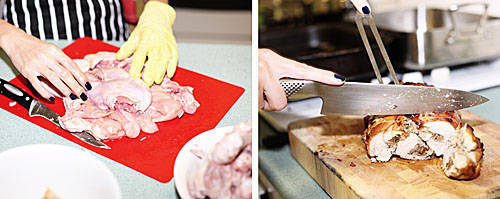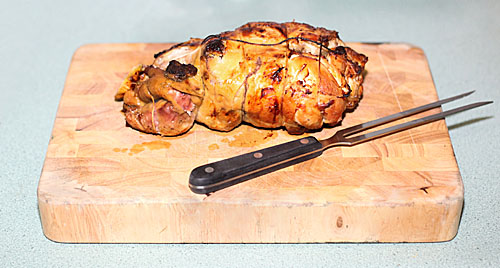The following recipe has been affectionately known by the names ‘Chichcock’, ‘Spatcken’ and ‘The Great Chichicken Debacle’. Conceived and executed with my brilliant friend Mel, the spatchcock stuffed chicken was a two-day affair. Day one consisted of meticulously deboning a small spatchcock, otherwise known as a poussin or juvenile chicken, and a larger adult chicken. Using Jacques Pépin’s youtube tutorial for deboning quail as a guide, we sliced our way through the poultry incurring only minor injuries while keeping the majority of the bird intact. We stuffed and rolled the fowls into a small bundle and chilled them overnight in the fridge until the following day. Day two involved cooking the chickens and after sliding our concoction into a hot oven, two hours later we were delighted to find two tender birds – the spatchcock inside fairing a bit better than the larger chicken outside.
In the words of the great Julia Child from Mastering the Art of French Cooking,
“You may think that boning a fowl is an impossible feat if you have never seen it done or thought of attempting it. Although the procedure may take 45 minutes the first time because of fright, it can be accomplished in not much more than 20 on your second or third try.”
– Julia Child, Mastering the Art of French Cooking
With this advice ringing in our ears, Mel and I decided to forfeit the cooking class in favour of a self-taught approach. In the end, there will be none the wiser should there be a few extra cuts or or pieces after deboning a bird.

Gustave Caillebotte was a French artist working in Paris during the era of Impressionism. Caillebotte worked with a loose brushstroke similar to that of the Impressionists but his paintings tended to be much more realistic in nature. In the early 1880’s, when Display of Chickens and Game Birds (c.1882) was painted, Caillebotte completed a number of still lifes – many of which featured meat at a butcher shop. He had an interest in photography and the painting is an excellent example of the cropping techiniques he appropriated from the medium. Through this technique, Caillebotte’s subject – butchery – has been mimicked by the visual decapitation of the row of birds in the bottom left corner of the canvas.

Spatchcock Stuffed Chicken
Yield: 6 servings
1 chicken
1 spatchcock (baby chicken)
1 1/2 cups stuffing
salt and pepper
1 tablespoon butter
Carefully debone the two birds following this tutorial. Lay the large chicken down on a cutting board and spread a layer of stuffing. Place the spatchcock on top of the layer of stuffing and form the remaining stuffing into a long log down the middle of the small bird. Carefully wrap the spatchcock around the stuffing log and then wrap the edges of the chicken around the spatchcock. Secure with baking string.
Place in a large baking tray and season the outside with salt and pepper. Cover the top of the secured roast with butter. Cover the tray with aluminum foil and slide into an oven at 350°F/180°C for around 2 hours. After the 1st hour, remove the aluminum foil and return to the oven. Check with a thermometer to ensure the inner bird is cooked thoroughly. Remove from the oven and let rest for at least 20 minutes prior to removing the string and slicing.

Lemon & Parsley Stuffing
Yield: 1 1/2 cups
1 cup breadcrumbs
1/3 cup butter, softened
walnuts, chopped
almonds, chopped
1/4 onion, minced
1 small bunch parsley
lemon zest
salt & pepper
garlic clove, minced
Add all of the ingredients to a suitable sized bowl. Carefully rub the butter into the other ingredients until the mixture begins to clump together like wet sand. Use as the stuffing for a bird or as the filling for a roll. The stuffing (or dressing as it is oft called) will cook with the poultry.


8 comments
(@mfizell) (@mfizell) says:
Apr 14, 2012
Gustave Caillebotte – Spatchcock Stuffed Chicken http://t.co/EATCgyXV #food #art
(@mfizell) (@mfizell) says:
Apr 15, 2012
“You may think that boning a fowl is an impossible feat if you have never seen it done” – Julia Child http://t.co/vDxNAGuo
Rosa says:
Apr 15, 2012
A wonderful recipe!
Cheers,
Rosa
Julie says:
Apr 15, 2012
Knives and I do not get along, so this recipe is not one I would attempt. I would, however, gladly eat it if you would prepare it for me.
Ed Charles (@tomatom) says:
Apr 15, 2012
I love this food/art blog. Check it out. http://t.co/AgT5rViK
Big Fan says:
Apr 16, 2012
Your bird looks tasty!
deana says:
Apr 19, 2012
Funny, I have always thought of spatchcock as a flattened chicken… this way of doing it is new to me… another great post and art. Congrats on the Saveur nomination!!
Lisa @ Snappy Gourmet says:
Apr 24, 2012
You must have a lot of patience! Looks like a lot of work, but looks great!